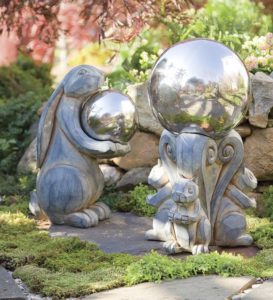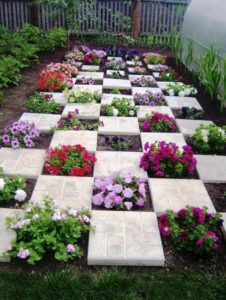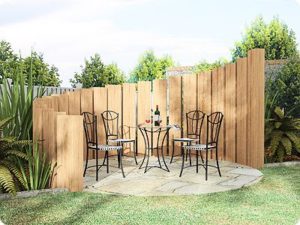Focal points in a garden design to draw and direct the eye. Think of a garden or your backyard, large or small, that was just a swath of plants. Your eye sweeps along, not knowing where to land. A sense of flow is nice, but without a focus, your garden is not really taken in and studied. It is quickly passed over.
Now think of a garden you saw with a wonderful water feature, a weeping tree or a dramatic ornament.

Small gardens can pose difficulties for creating a focal point. Obviously, you don’t want to sacrifice your entire garden space to one large plant or tree. But focal points can be scaled to the size of your garden. Even the smallest space could have one unique, flamboyant plant that calls attention to itself. Think of tall, orange-leaved cannas or a dwarf conifer design with some stones.
So What Constitutes a Focal Point?
Pretty much any striking feature in your garden:
An unusual specimen (Red Twig Dogwood)
A large, architectural plant (Cimicifuga)
A group of plants (a cluster of astilbe, bleeding heart, and ferns)
A vibrant color (orange canna)
A single white plant
An ornament (Birdbath, gazing globe, statue…)
Large boulders
A dwarf shrub or tree
You don’t have to start your garden design with a focal point, but you don’t want to throw one in as an afterthought. Think about the style of garden you want and the plants you are considering using.

Then list possible features that would complement, yet stand out from your basic design. Some designs lend themselves to the obvious focal point: a ranch garden with a small water feature, a cottage garden with a cement statue, a herb garden with an obelisk.
If you have a preexisting large tree near your garden, that will become a focal point whether you mean to or not. You might want to enhance it with a birdhouse or a flowering vine, like climbing hydrangea.

